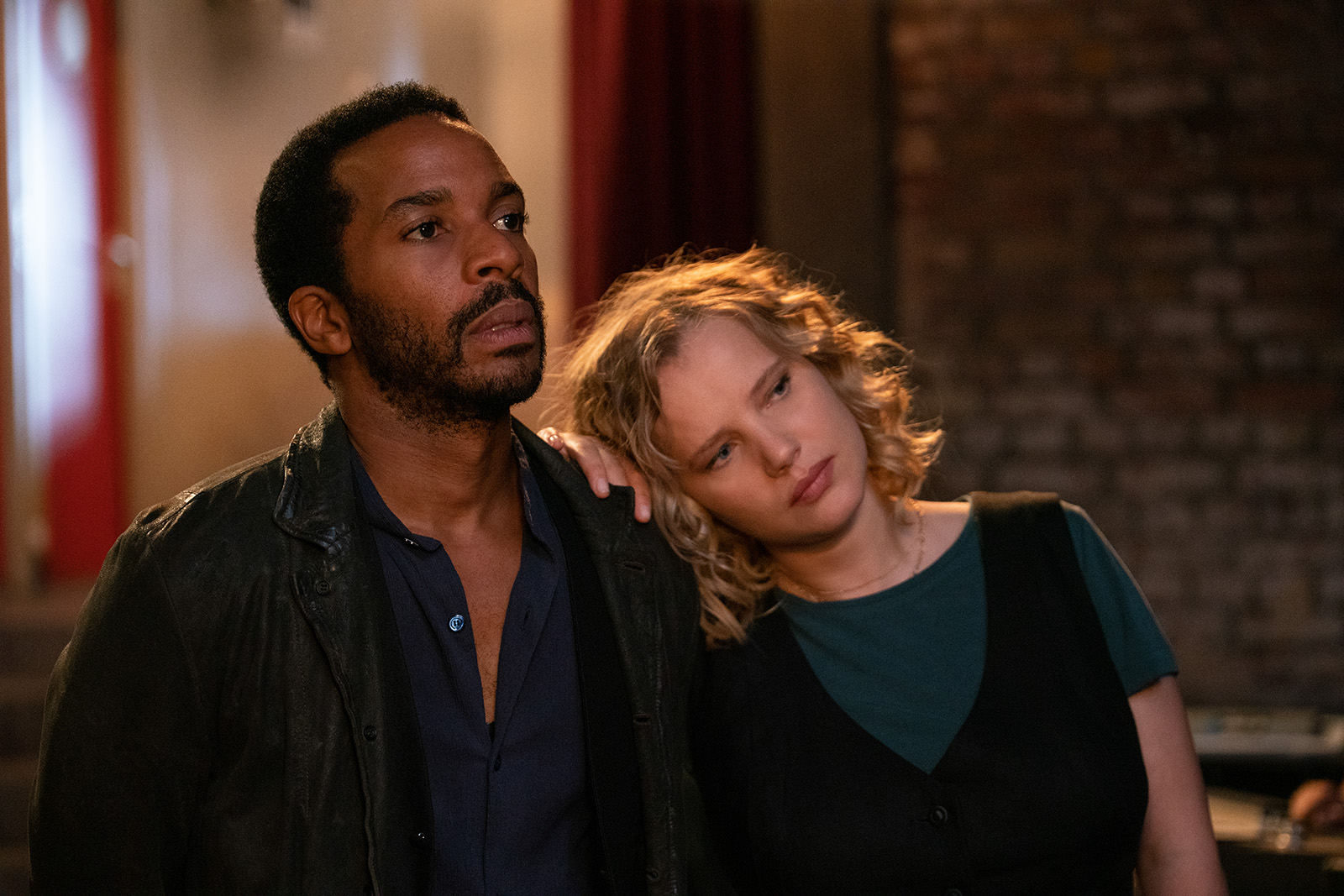TV review: ‘The Eddy’ indulges in cliches, but still proves itself to be musical masterpiece

(Courtesy of Lou Faulon/Netflix)
" The Eddy"
Created by Jack Thorne
Netflix
May 8
By Mark McGreal
May 8, 2020 5:22 p.m.
Damien Chazelle trades in the glitz and glamour of Hollywood for a seedy French jazz club in “The Eddy.”
The new Netflix limited series, premiering Friday, follows Elliot Udo (André Holland) as a former superstar musician at the end of his rope who now owns a Parisian nightclub called The Eddy. But when tragedy strikes, Elliot finds himself trapped in a situation that could doom his club – or, worse, land him in jail. What follows is an eight-episode triumph centered around the difficulties of loss and holding a disintegrating dream together.
The series’ excellence in storytelling and filmmaking comes as no surprise, as “The Eddy” marks the television directing debut of Chazelle – the Academy Award-winning director of “La La Land” and “Whiplash.” Jack Thorne, who is best known for writing the stage play of “Harry Potter and the Cursed Child,” also created the show and sports writing credits for each episode. However, the true magic of the Netflix series stems from the jazz musicians, who must employ some sort of sorcery to play so masterfully.
Of course, as with most projects Chazelle is a part of, music takes center stage in the show. Each episode showcases multiple up-tempo jazz scenes that boast a supremely talented band, contrasting well with the quieter, more emotional scenes.
[Related: TV review: ‘Hollywood’ offers a hopeful story but is too fantastical to be realistic drama]
But these onstage scenes don’t just sound beautiful – they look beautiful as well. While most episodes are helmed by different directors, they all contain masterfully filmed scenes full of close-up shots on the hands and faces of the musicians. The band members’ faces convey feelings ranging from intense pain and concentration to jubilant exhilaration and lecherous yearning, all of which is captured by not only the camera but the actors as well.
Such potent onstage emotions are also often reflected in the characters’ personalities. While the show easily could have fallen into a trap of focusing only on one or two characters, “The Eddy” remembers to flesh out its secondary characters. This thoroughness elevates the emotional stakes of each scene and makes for a more engaging story.
The narrative consistently follows Elliot, but almost every episode is named after a different character in the band and the camera spends a significant amount of time following the titular character. The characters are given intricate – and far more realistic – background stories, making them feel more genuine. The well-distributed screen time gives more members of the ensemble cast space to shine in a way few shows have adequately done in the past. The band’s bass player, Jude (Damian Nueva), easily could have been relegated to a background role but instead the show provides ample room for him to develop – his eponymous episode is one of the most emotional in the series.
Joanna Kulig, an actress best known for her role in the Polish film “Cold War,” definitely benefits with her added screen time as she balances her character Maja’s love for Elliot with a desperate desire to achieve more. Maja isn’t alone in her desperation either – every character in the show pushes this as the central theme of “The Eddy.” Even Elliot proves early on that he will do almost anything to keep the club afloat because everything he has is tied into it. Although from the look of the club, it’s clear Elliot doesn’t have much.
[Related: ‘Killing Eve’ season 3 recap – episode 4: ‘Still Got It’]
The visual presentation of “The Eddy” pushes the same end of the line desperation that characters like Elliot and Jude are experiencing. The limited series makes excellent use of the handheld camera, getting up close and personal with its characters as well as the seedy club setting. The low production value appearance initially distracts from the show itself, but the style ultimately works in context as it reflects the dive bar’s industrial nature. Effortless camera movements and sun-bright lighting would seem out of place against the otherwise dingy background.
Despite such world-building, however, the largest indictment of the show is its tendency to revert to cliches. This is most evident in the fifth episode, wherein Elliot rushes to the airport to chase down his love interest Maja before she hops on a plane, embarking on a European tour to leave him forever at the Eddy. And to no one’s surprise, Elliot miraculously arrives at the right gate just before she can board the plane, delivering an impassioned speech that ultimately convinces her to stay.
Moments like these are unrealistic and detract from the overall show at times, but thankfully they appear sparingly enough so as not to completely ruin the finished product. For the most part, “The Eddy” grounds itself in meaningful, real-world problems, tackling drug addiction and death with care and nuance. And it doesn’t hurt that there’s ample talent on and off screen, guiding the show toward riveting visuals and plot lines.
If nothing else, “The Eddy” continues to prove a seemingly unquestionable fact – when Chazelle is involved, expect nothing less than the best.

